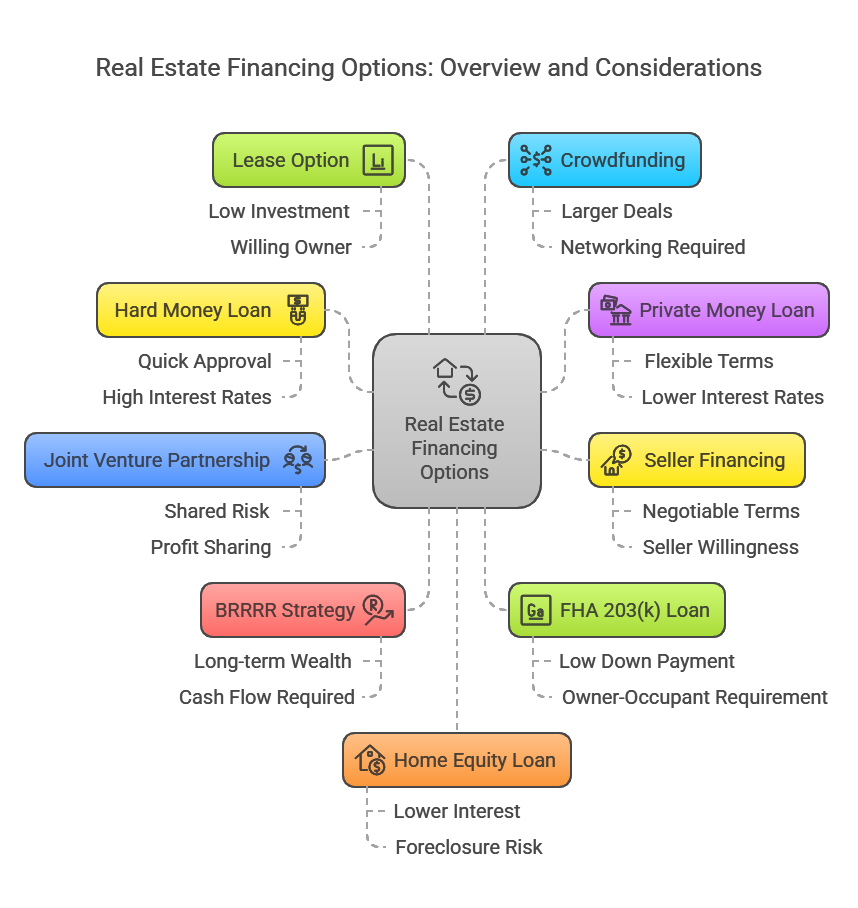


How it Works: Short-term loan from a private lender, secured by the property.
Pros: Quick approval, flexible terms.
Cons: High interest rates, short repayment period.
How it Works: Borrowing from individuals, family, or acquaintances.
Pros: Flexible terms, lower interest rates.
Cons: Requires strong networking.
How it Works: The seller finances the deal, and the buyer makes payments over time.
Pros: No banks, negotiable terms.
Cons: Seller must be willing, possibly higher interest.
How it Works: One partner funds, the other manages.
Pros: Shared risk, no debt.
Cons: Profit sharing, potential disagreements.
How it Works: Rent the property before refinancing to pull out capital.
Pros: Long-term wealth-building.
Cons: Requires cash flow to sustain until refinance.
How it Works: Owner-occupants can finance purchase & renovation with low down payment.
Pros: Low down payment.
Cons: Must live in the property for 12 months.
How it Works: Lease the property with an option to buy after renovations.
Pros: Low upfront investment.
Cons: Requires a willing owner.
How it Works: Pooling funds from multiple investors.
Pros: Access to larger deals.
Cons: Requires strong networking.
How it Works: Using existing property equity to finance the flip.
Pros: Lower interest than hard money.
Cons: Risk of foreclosure.
How it Works: Using business credit for financing.
Pros: Quick access to funds.
Cons: High interest if not paid off quickly.
How it Works: Find a distressed property and fund it with an investor.
Pros: No personal capital needed.
Cons: Requires a strong investor network.
How it Works: Using federal and state tax credits for historic properties.
Pros: Large renovation cost savings.
Cons: Must follow strict renovation guidelines.